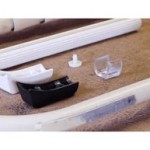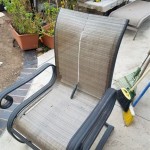Patio Furniture Webbing Repair: A Comprehensive Guide
If you're an outdoor enthusiast who values comfort and style, there's no better way to elevate your patio than with elegant and sophisticated patio furniture. These pieces often feature durable webbing that supports your body while adding a touch of sophistication to your outdoor space. However, with prolonged use and exposure to the elements, webbing can deteriorate, affecting both the comfort and visual appeal of your furniture.
Fret not! Patio furniture webbing repair is a relatively straightforward task that can restore the integrity and beauty of your beloved pieces. Here's a comprehensive guide that will equip you with the knowledge and techniques needed to rejuvenate your patio furniture effortlessly.
Step 1: Gather Your Tools and Materials
Before embarking on your repair journey, ensure you have the following tools and materials within reach:
- Measuring tape
- New webbing
- Scissors
- Staple gun and staples
- Screwdriver or wrench (if necessary)
- Optional: Webbing stretcher or bungee cords
Step 2: Measure and Cut the Webbing
Measure the existing webbing to determine its length and width. Use these measurements as a guide when purchasing new webbing to ensure a perfect fit. Once you have the new webbing, cut it to the desired length using sharp scissors.
Step 3: Remove the Old Webbing
Carefully remove the old webbing by detaching it from the frame. Use a screwdriver or wrench to remove any screws or bolts that may be holding it in place. Be cautious not to damage the frame during this process.
Step 4: Install the New Webbing
Position the new webbing onto the frame, aligning it evenly. Use a staple gun to secure the webbing to the frame, ensuring the staples are evenly spaced and firmly in place. Start stapling from the center and work outwards towards the edges.
Step 5: Tension the Webbing (Optional)
For maximum comfort and durability, consider tensioning the webbing. This can be done using a webbing stretcher or bungee cords. Apply even pressure across the webbing to ensure a taut and supportive surface.
Step 6: Trim the Excess Webbing
Once the webbing is secure, trim any excess material around the edges using scissors. This will give your furniture a clean and polished look.
Step 7: Enjoy Your Refurbished Patio Furniture
Congratulations! You've successfully repaired the webbing on your patio furniture, restoring its comfort and aesthetic value. Now sit back, relax, and enjoy your rejuvenated outdoor space with newfound comfort and tranquility.
Tips for Successful Webbing Repair
- Use high-quality webbing designed for outdoor use to ensure durability and longevity.
- If the webbing shows signs of wear or tearing, repair it promptly to prevent further damage.
- Consider applying a protective coating to the webbing to enhance its resistance to UV rays and moisture.
- Store your patio furniture in a covered area during periods of heavy rain or snow to prolong its lifespan.
With regular maintenance and proper care, your patio furniture will continue to provide comfort and style for many years to come. Embrace the satisfaction of completing this simple repair and enjoy the beauty and functionality of your refurbished outdoor oasis.

Wicker Furniture Repair Guide Jessica Welling Interiors

How To Replace Two Piece Sling Chair Fabric

How To Replace Fabric On A Patio Sling Chair

How To Repair And Re Wicker Furniture Patio Ions

How To Replace Fabric On A Patio Sling Chair

How To Replace Fabric On A Patio Sling Chair

How To Replace Fabric On A Patio Sling Chair

Simple Ways To Repair Rattan Garden Furniture 14 Steps

How To Repair And Re Wicker Furniture Patio Ions

Outdoor Furniture Repair Blog Tip Tricks From Hauser S Patio San Diego Ca
See Also








